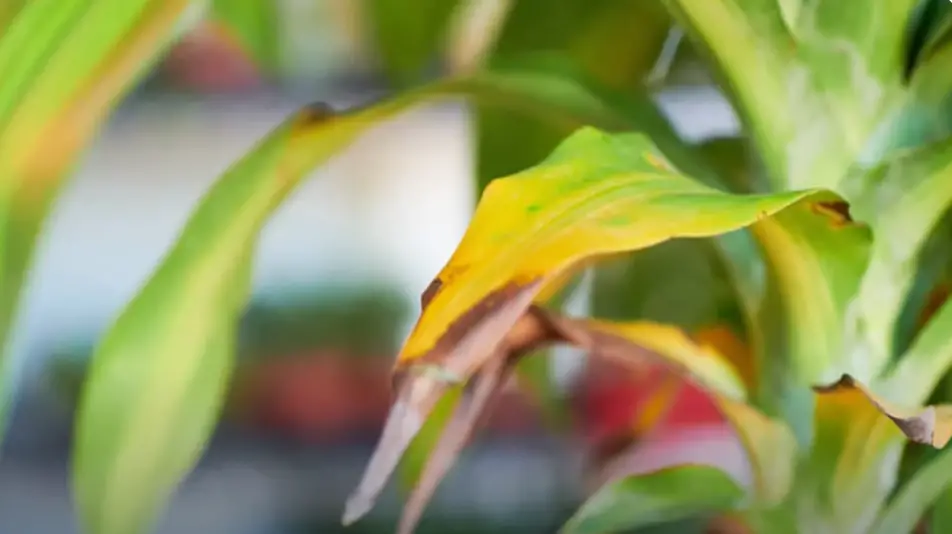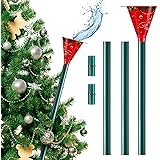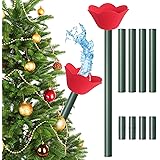Is your precious corn plant looking sickly and on the verge of giving up? Don’t panic! You can indeed save a dying corn plant with a little tender loving care. Whether you’re a seasoned gardener or just starting out, this article will guide you through the steps to revive your wilting corn plant.
From diagnosing the problem to implementing effective solutions, we’ll explore everything you need to know about how to save a dying corn plant. So, let’s dive right in and bring your corn plant back to life!
How to Save a Dying Corn Plant: A Comprehensive Guide
Corn plants can be a beautiful addition to any garden or indoor space, but they can also be finicky and sensitive. If you find yourself with a dying corn plant, don’t fret! With the right care, attention, and a bit of know-how, you can revive your struggling corn plant and bring it back to life.
In this comprehensive guide, we’ll explore step-by-step strategies and techniques to save a dying corn plant, from diagnosing the problem to implementing the necessary solutions. So roll up your sleeves, grab your gardening gloves, and let’s get started on rescuing your corn plant!
Read More: About Why Is Russian Garlic So Expensive?
Diagnosing the Problem
Before you can effectively save a dying corn plant, it’s essential to identify the root cause of its decline. Here are some common issues that may be affecting your corn plant:
Inadequate Light
Corn plants thrive in bright, indirect light. Insufficient light can lead to pale, yellowing foliage and stunted growth.
Assess the lighting conditions in the plant’s current location and determine if it needs to be moved to a spot with better natural light or supplemented with artificial grow lights.
Improper Watering
Overwatering or underwatering can both spell trouble for corn plants. Overwatering can lead to root rot and yellowing leaves, while underwatering can cause wilting and browning of the foliage.
Check the moisture level of the soil regularly and adjust your watering schedule accordingly, ensuring that the soil is neither too soggy nor bone dry.
Poor Drainage
Corn plants prefer well-draining soil. If the soil retains too much water and doesn’t allow for proper drainage, it can lead to root issues and fungal infections.
Consider repotting your corn plant in a well-draining potting mix or adding drainage holes to its current container.
Temperature Extremes
Extreme temperatures can take a toll on corn plants. Exposure to cold drafts or excessive heat can cause leaf browning, wilting, and overall decline.
Ensure that your corn plant is placed in an area with a temperature range of 65-80°F (18-27°C), away from drafts and extreme temperature fluctuations.
Nutrient Deficiencies
Corn plants require specific nutrients to thrive. Nutrient deficiencies can manifest as discolored or spotted leaves and poor overall growth.
Using a balanced, water-soluble fertilizer formulated for houseplants can help replenish essential nutrients and support your plant’s revival.
Reviving a Dying Corn Plant
Once you have identified the underlying issue causing your corn plant’s decline, it’s time to take action. Here are step-by-step strategies to revive a dying corn plant:
1. Assess the Root System
Gently remove the corn plant from its pot to examine the root system. Healthy roots should be firm, white, and have a pleasant earthy smell.
If you notice mushy, brown, or foul-smelling roots, it indicates root rot. Trim away any damaged or rotting roots using clean, sharp scissors or pruners.
2. Repot the Plant
Choose a clean pot that is slightly larger than the current one and has drainage holes. Fill the pot with a well-draining potting mix, such as a blend of peat moss, perlite, and vermiculite.
Place the corn plant in the new pot, ensuring that the roots are spread out evenly. Backfill with potting mix, gently firming it around the roots.
3. Adjust Lighting Conditions
If inadequate light was the issue, relocate the corn plant to a spot that offers bright, indirect light. If natural light is limited, consider using artificial grow lights to supplement the plant’s light requirements.
Keep the lights on for 12-14 hours a day, mimicking the natural daylight cycle.
4. Optimize Watering Routine
Ensure that you water your corn plant properly by following these guidelines:
- Check the moisture level of the soil by inserting your finger about an inch deep. If it feels dry, it’s time to water.
- Water the plant thoroughly, allowing water to flow out through the drainage holes.
- Empty the excess water from the saucer or tray to prevent the plant from sitting in standing water.
- Repeat the watering process only when the top inch of the soil has dried out.
5. Provide Adequate Humidity
Corn plants appreciate moderate humidity levels. If the air in your home is dry, especially during winter months, consider increasing the humidity around your plant. You can achieve this by:
- Misting the foliage with room-temperature water.
- Placing a tray of water near the plant or using a humidifier to add moisture to the air.
- Grouping plants together to create a microclimate with higher humidity levels.
6. Address Nutrient Deficiencies
If nutrient deficiencies are the culprit, begin a regular feeding routine using a balanced, water-soluble houseplant fertilizer.
Follow the instructions on the fertilizer packaging for dosage and frequency. Be careful not to overfertilize, as this can lead to salt buildup and further damage the plant.
7. Monitor and Maintain
Keep a close eye on your revived corn plant and continue providing the necessary care described above. Monitor for any signs of improvement or setbacks, such as new growth or continued decline. Adjust your care routine as needed to ensure the plant’s ongoing health and well-being.
Saving a dying corn plant requires patience, attention, and a willingness to troubleshoot and implement the appropriate solutions. By diagnosing the problem, repotting if necessary, adjusting lighting conditions, optimizing watering, providing adequate humidity, addressing nutrient deficiencies, and monitoring the plant’s progress, you can give your corn plant a new lease on life.
Remember, each plant is unique, so it may take some time and experimentation to find the perfect care routine for your corn plant. With proper care and a little TLC, your corn plant can thrive once again, bringing beauty and vibrancy to your home or garden.
Read More: About What Does Sulfur Do For Plants?
Frequently Asked Questions (FAQs)
Some signs that indicate a dying corn plant include yellowing or browning of leaves, wilting, stunted growth, and root rot. It’s important to inspect the plant regularly and look for these symptoms.
The common causes of a dying corn plant can vary, but they often include inadequate watering, nutrient deficiencies, pests, diseases, improper sunlight exposure, and poor soil quality.
When dealing with a dying corn plant, it’s crucial to water it properly. Water the plant when the top inch of soil feels dry to the touch. Avoid overwatering, as it can lead to root rot and further damage the plant.
A dying corn plant may benefit from additional nutrients to revive its health. Consider using a balanced fertilizer rich in nitrogen, phosphorus, and potassium. These nutrients are essential for the plant’s growth and recovery.
To save a dying corn plant from pests, it’s important to identify the specific pest affecting the plant. Once identified, use appropriate organic or chemical pest control methods like insecticidal soap or neem oil to eliminate the pests effectively.
Increasing sunlight exposure could potentially help revive a dying corn plant. However, it’s important to gradually introduce more sunlight to prevent sunburn. Monitor the plant’s response and adjust accordingly.
Improving the soil quality is crucial for saving a dying corn plant. Add organic matter, such as well-rotted compost, to enhance the soil’s fertility and drainage. Additionally, regularly check the soil pH to ensure it is suitable for corn plants.
If the roots of a corn plant are affected, saving it becomes more challenging. However, if caught early, you can try trimming the affected roots and replanting the corn in fresh, well-draining soil. Ensure proper care and monitor its progress closely.
Final Thoughts
To save a dying corn plant, it is crucial to identify and address the underlying issues promptly. First, ensure the plant receives adequate sunlight for at least six hours a day. Additionally, provide it with well-draining soil and ensure proper watering by deeply saturating the soil when it becomes dry. Regularly monitor the plant for pests and diseases, and promptly treat any issues that arise.
Pruning any damaged or diseased leaves or stalks can also help save the plant. Finally, providing appropriate nutrients through fertilizer can revitalize the corn plant and promote healthy growth. By implementing these steps, you can effectively save a dying corn plant.
Auto Amazon Links: No products found.
Perfect Plants Christmas Tree Saver 8oz. | Easy Use Xmas Tree Preserver Food | Have Healthy Green Christmas Trees All Holiday Season
$9.97 (as of December 12, 2025 05:04 GMT +00:00 - More info- Product prices and availability are accurate as of the date/time indicated and are subject to change. Any price and availability information displayed on [relevant Amazon Site(s), as applicable] at the time of purchase will apply to the purchase of this product.
Rocky Mountain Goods Christmas Tree Food - 8 oz Tree Preservative - Reduce Needle Drop - Greener Scent - Fir, Pine, Spruce Trees - Extend Tree Life
$9.95 (as of December 12, 2025 05:04 GMT +00:00 - More info- Product prices and availability are accurate as of the date/time indicated and are subject to change. Any price and availability information displayed on [relevant Amazon Site(s), as applicable] at the time of purchase will apply to the purchase of this product.
VICAMB 39.3 Inch Christmas Tree Watering Funnel,Christmas Tree Watering System Device,Long Tree Watering Funnel Spout for Indoor Outdoor Xmas Tree
$16.99 (as of December 12, 2025 05:04 GMT +00:00 - More info- Product prices and availability are accurate as of the date/time indicated and are subject to change. Any price and availability information displayed on [relevant Amazon Site(s), as applicable] at the time of purchase will apply to the purchase of this product.
FirEver Pure Christmas Tree Food | Preserver Additive & Season Extender for Live Xmas Trees | Keep It Green, Reduce Needle-Drop | Miracle Freshness (8 oz)
$14.99 (as of December 12, 2025 05:04 GMT +00:00 - More info- Product prices and availability are accurate as of the date/time indicated and are subject to change. Any price and availability information displayed on [relevant Amazon Site(s), as applicable] at the time of purchase will apply to the purchase of this product.
EZMeetU Christmas Tree Watering Funnel, 47 Inch Flower Shape Adjustable 6 Section Design, Christmas Tree Watering System, Christmas Tree Waterer, Long Funnel Wide Opening Reusable, Plant Watering Tool
$16.99 (as of December 12, 2025 05:04 GMT +00:00 - More info- Product prices and availability are accurate as of the date/time indicated and are subject to change. Any price and availability information displayed on [relevant Amazon Site(s), as applicable] at the time of purchase will apply to the purchase of this product.
Snow Joe Premium Enviro Blend Ice Melt, Green-Coated Deicer Crystals, 50 lb - Safer Melter for Vegetation, Concrete & Metals w/ Anti-Corrosion Calcium Magnesium Acetate
$32.97 (as of December 12, 2025 19:27 GMT +00:00 - More info- Product prices and availability are accurate as of the date/time indicated and are subject to change. Any price and availability information displayed on [relevant Amazon Site(s), as applicable] at the time of purchase will apply to the purchase of this product.
Muddy Mat® Shown on TV Super Absorbent Microfiber Dog Door Mat for Muddy Paws, Non-Slip Washable Pet Rug, Quick Dry Chenille Entryway Carpet, Machine Washable Indoor Outdoor mat, Grey 30"x19"
$24.95 (as of December 12, 2025 19:27 GMT +00:00 - More info- Product prices and availability are accurate as of the date/time indicated and are subject to change. Any price and availability information displayed on [relevant Amazon Site(s), as applicable] at the time of purchase will apply to the purchase of this product.
ivtivfu Rolling Grill Basket, Removable Wooden Handle, 304 Stainless Steel, Nesting BBQ Tools, Smoker Grilling Accessories for Vegetable, Outdoor Cooking Camping, Birthday Gifts for Men Dad Husband
$25.99 (as of December 12, 2025 19:27 GMT +00:00 - More info- Product prices and availability are accurate as of the date/time indicated and are subject to change. Any price and availability information displayed on [relevant Amazon Site(s), as applicable] at the time of purchase will apply to the purchase of this product.
XXXFLOWER Plant Terrarium with Wooden Stand, Air Planter Bulb Glass Vase Metal Swivel Holder Retro Tabletop for Hydroponics Home Garden Office Decoration - 3 Bulb Vase
$18.98 (as of December 12, 2025 19:27 GMT +00:00 - More info- Product prices and availability are accurate as of the date/time indicated and are subject to change. Any price and availability information displayed on [relevant Amazon Site(s), as applicable] at the time of purchase will apply to the purchase of this product.
Zevo Flying Insect Trap Official Refill Cartridges - Fits Both Zevo Trap & MAX Indoor Fly Trap - Authentic Trap+Lock Technology to Catch Gnats, House & Fruit Flys (4 Official Refill Cartridges)
$14.97 (as of December 12, 2025 19:27 GMT +00:00 - More info- Product prices and availability are accurate as of the date/time indicated and are subject to change. Any price and availability information displayed on [relevant Amazon Site(s), as applicable] at the time of purchase will apply to the purchase of this product.











